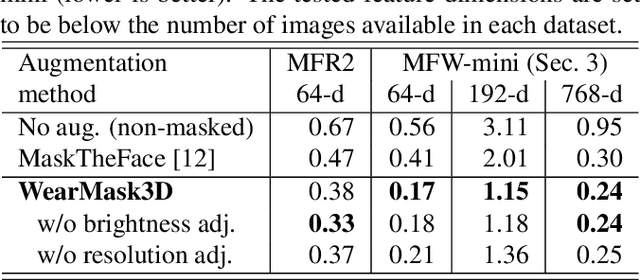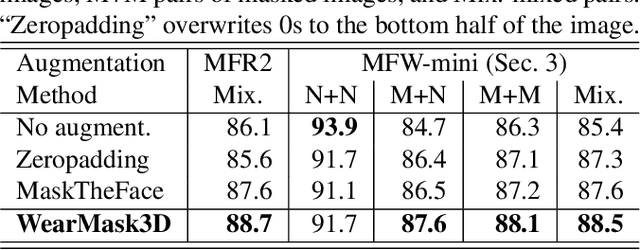Je Hyeong Hong
PINGS-X: Physics-Informed Normalized Gaussian Splatting with Axes Alignment for Efficient Super-Resolution of 4D Flow MRI
Nov 14, 2025Abstract:4D flow magnetic resonance imaging (MRI) is a reliable, non-invasive approach for estimating blood flow velocities, vital for cardiovascular diagnostics. Unlike conventional MRI focused on anatomical structures, 4D flow MRI requires high spatiotemporal resolution for early detection of critical conditions such as stenosis or aneurysms. However, achieving such resolution typically results in prolonged scan times, creating a trade-off between acquisition speed and prediction accuracy. Recent studies have leveraged physics-informed neural networks (PINNs) for super-resolution of MRI data, but their practical applicability is limited as the prohibitively slow training process must be performed for each patient. To overcome this limitation, we propose PINGS-X, a novel framework modeling high-resolution flow velocities using axes-aligned spatiotemporal Gaussian representations. Inspired by the effectiveness of 3D Gaussian splatting (3DGS) in novel view synthesis, PINGS-X extends this concept through several non-trivial novel innovations: (i) normalized Gaussian splatting with a formal convergence guarantee, (ii) axes-aligned Gaussians that simplify training for high-dimensional data while preserving accuracy and the convergence guarantee, and (iii) a Gaussian merging procedure to prevent degenerate solutions and boost computational efficiency. Experimental results on computational fluid dynamics (CFD) and real 4D flow MRI datasets demonstrate that PINGS-X substantially reduces training time while achieving superior super-resolution accuracy. Our code and datasets are available at https://github.com/SpatialAILab/PINGS-X.
GTA-Crime: A Synthetic Dataset and Generation Framework for Fatal Violence Detection with Adversarial Snippet-Level Domain Adaptation
Sep 10, 2025Abstract:Recent advancements in video anomaly detection (VAD) have enabled identification of various criminal activities in surveillance videos, but detecting fatal incidents such as shootings and stabbings remains difficult due to their rarity and ethical issues in data collection. Recognizing this limitation, we introduce GTA-Crime, a fatal video anomaly dataset and generation framework using Grand Theft Auto 5 (GTA5). Our dataset contains fatal situations such as shootings and stabbings, captured from CCTV multiview perspectives under diverse conditions including action types, weather, time of day, and viewpoints. To address the rarity of such scenarios, we also release a framework for generating these types of videos. Additionally, we propose a snippet-level domain adaptation strategy using Wasserstein adversarial training to bridge the gap between synthetic GTA-Crime features and real-world features like UCF-Crime. Experimental results validate our GTA-Crime dataset and demonstrate that incorporating GTA-Crime with our domain adaptation strategy consistently enhances real world fatal violence detection accuracy. Our dataset and the data generation framework are publicly available at https://github.com/ta-ho/GTA-Crime.
Structure-from-Sherds++: Robust Incremental 3D Reassembly of Axially Symmetric Pots from Unordered and Mixed Fragment Collections
Feb 19, 2025Abstract:Reassembling multiple axially symmetric pots from fragmentary sherds is crucial for cultural heritage preservation, yet it poses significant challenges due to thin and sharp fracture surfaces that generate numerous false positive matches and hinder large-scale puzzle solving. Existing global approaches, which optimize all potential fragment pairs simultaneously or data-driven models, are prone to local minima and face scalability issues when multiple pots are intermixed. Motivated by Structure-from-Motion (SfM) for 3D reconstruction from multiple images, we propose an efficient reassembly method for axially symmetric pots based on iterative registration of one sherd at a time, called Structure-from-Sherds++ (SfS++). Our method extends beyond simple replication of incremental SfM and leverages multi-graph beam search to explore multiple registration paths. This allows us to effectively filter out indistinguishable false matches and simultaneously reconstruct multiple pots without requiring prior information such as base or the number of mixed objects. Our approach achieves 87% reassembly accuracy on a dataset of 142 real fragments from 10 different pots, outperforming other methods in handling complex fracture patterns with mixed datasets and achieving state-of-the-art performance. Code and results can be found in our project page https://sj-yoo.info/sfs/.
FUN-AD: Fully Unsupervised Learning for Anomaly Detection with Noisy Training Data
Nov 25, 2024



Abstract:While the mainstream research in anomaly detection has mainly followed the one-class classification, practical industrial environments often incur noisy training data due to annotation errors or lack of labels for new or refurbished products. To address these issues, we propose a novel learning-based approach for fully unsupervised anomaly detection with unlabeled and potentially contaminated training data. Our method is motivated by two observations, that i) the pairwise feature distances between the normal samples are on average likely to be smaller than those between the anomaly samples or heterogeneous samples and ii) pairs of features mutually closest to each other are likely to be homogeneous pairs, which hold if the normal data has smaller variance than the anomaly data. Building on the first observation that nearest-neighbor distances can distinguish between confident normal samples and anomalies, we propose a pseudo-labeling strategy using an iteratively reconstructed memory bank (IRMB). The second observation is utilized as a new loss function to promote class-homogeneity between mutually closest pairs thereby reducing the ill-posedness of the task. Experimental results on two public industrial anomaly benchmarks and semantic anomaly examples validate the effectiveness of FUN-AD across different scenarios and anomaly-to-normal ratios. Our code is available at https://github.com/HY-Vision-Lab/FUNAD.
Power Variable Projection for Initialization-Free Large-Scale Bundle Adjustment
May 08, 2024Abstract:Initialization-free bundle adjustment (BA) remains largely uncharted. While Levenberg-Marquardt algorithm is the golden method to solve the BA problem, it generally relies on a good initialization. In contrast, the under-explored Variable Projection algorithm (VarPro) exhibits a wide convergence basin even without initialization. Coupled with object space error formulation, recent works have shown its ability to solve (small-scale) initialization-free bundle adjustment problem. We introduce Power Variable Projection (PoVar), extending a recent inverse expansion method based on power series. Importantly, we link the power series expansion to Riemannian manifold optimization. This projective framework is crucial to solve large-scale bundle adjustment problem without initialization. Using the real-world BAL dataset, we experimentally demonstrate that our solver achieves state-of-the-art results in terms of speed and accuracy. In particular, our work is the first, to our knowledge, that addresses the scalability of BA without initialization and opens new venues for initialization-free Structure-from-Motion.
A 3D model-based approach for fitting masks to faces in the wild
Mar 01, 2021



Abstract:Face recognition research now requires a large number of labelled masked face images in the era of this unprecedented COVID-19 pandemic. Unfortunately, the rapid spread of the virus has left us little time to prepare for such dataset in the wild. To circumvent this issue, we present a 3D model-based approach called WearMask3D for augmenting face images of various poses to the masked face counterparts. Our method proceeds by first fitting a 3D morphable model on the input image, second overlaying the mask surface onto the face model and warping the respective mask texture, and last projecting the 3D mask back to 2D. The mask texture is adapted based on the brightness and resolution of the input image. By working in 3D, our method can produce more natural masked faces of diverse poses from a single mask texture. To compare precisely between different augmentation approaches, we have constructed a dataset comprising masked and unmasked faces with labels called MFW-mini. Experimental results demonstrate WearMask3D, which will be made publicly available, produces more realistic masked images, and utilizing these images for training leads to improved recognition accuracy of masked faces compared to the state-of-the-art.
 Add to Chrome
Add to Chrome Add to Firefox
Add to Firefox Add to Edge
Add to Edge